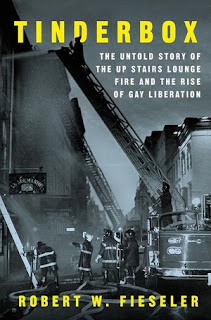 especially in the human sciences. His books include The Rise of Statistical Thinking, 1820-1900, Trust in Numbers, and Karl Pearson: The Scientific Life in a Statistical Age.
especially in the human sciences. His books include The Rise of Statistical Thinking, 1820-1900, Trust in Numbers, and Karl Pearson: The Scientific Life in a Statistical Age.Porter applied the “Page 99 Test” to his new book, Genetics in the Madhouse: The Unknown History of Human Heredity, and reported the following:
From page 99:Learn more about Genetics in the Madhouse at the Princeton University Press.The insane asylum as a restful, ordered place grew up in part as the remedy for a disease linked to modern hustle and bustle. It was in a way a backward-looking remedy in an age of industry and progress. It had much in common with communitarian utopian visions of this period, and it did not seem to be working. Hence the problem had to be confronted outside the walls of the institution.Page 99 the is the final page of part I. The section break corresponds roughly to the year 1860, by which time the rich Atlantic countries had established systems of insane asylums. Far from a panacea, the availability of free or subsidized facilities launched a dismaying, hyper-Malthusian increase of mental patients. Families with means were now fleeing the public asylums, to such an extent that the old idea of madness as a disease of civilization was giving way to madness as harbinger of a fateful degeneration.
From the beginning of this great confinement early nineteenth century, physicians had embraced a broad public-health mission. They would not merely treat and (they hoped) cure their patients, but also give advice to the community on how to prevent this scourge. Their tables of "presumed causes" of insanity, exhibited every year in reports, translated directly into advice for sane living: avoid masturbation, alcoholic excess, undue stress, disorder, and overwork. And the most crucial cause of all: choose carefully your marriage partner. From a social standpoint, heredity was not destiny. This was eugenics avant la lettre, and while sterilization was not yet an option, there already were indications of policy efforts to isolate "fatuous females" (for example) as a remedy for teeming madness.
By 1860, the effort to comprehend inherited insanity from a medical-scientific standpoint was picking up steam. Mostly it was a data project. It required the institutions to keep meticulous records on the interned patients, to track down family members, to count the mad in censuses, and to redesigning tables so they would indicate causal relationship. These research efforts, allied to the eugenic concerns, provide the principal focus of my book.
A plate from the 1880 census of insanity on the facing page, 98, was for the dust jacket by the designer, who made it hauntingly (and appropriately) weird. This table distinguishes effects of hereditary transmission on women and men as well as the degree of danger associated with mental illness of any particular relative, including father, mother, paternal and maternal grandfathers and grandmothers and aunts and uncles. These inquiries into the comparative role of hereditary transmission from (and to) males vs. females were petering out by the 1880s, but institutional data from asylums maintained its hereditary significance right into the twentieth century, perpetuated, now, in the name of genetics.
--Marshal Zeringue




















